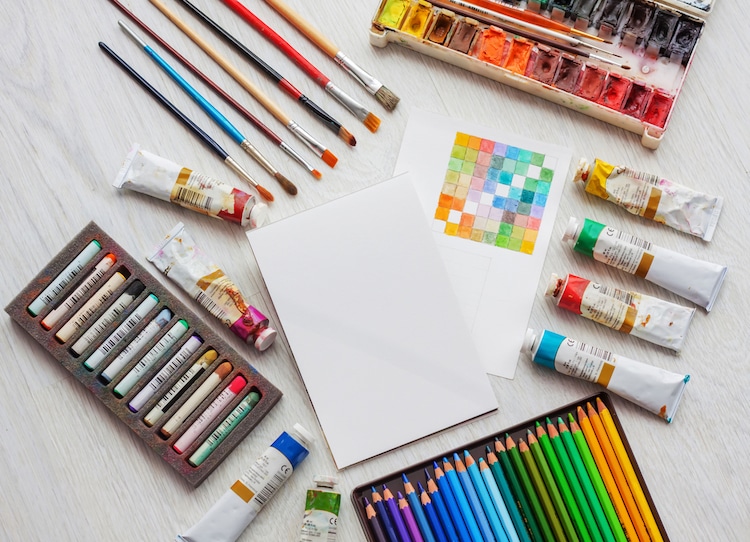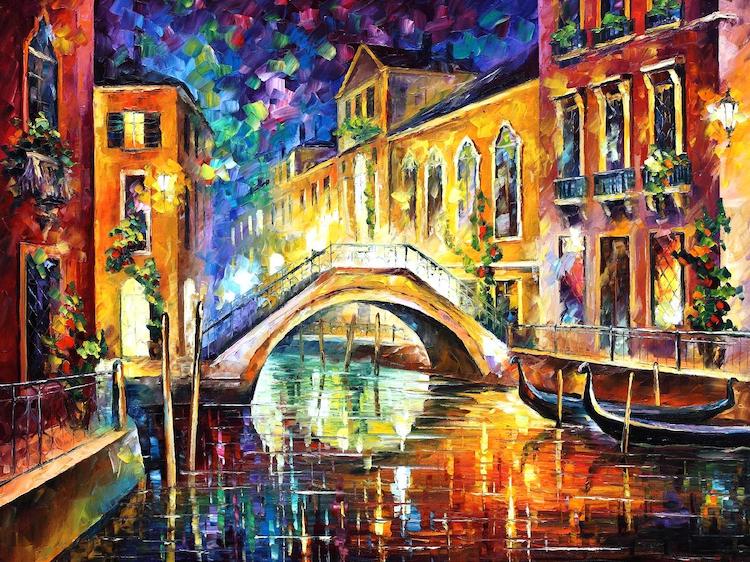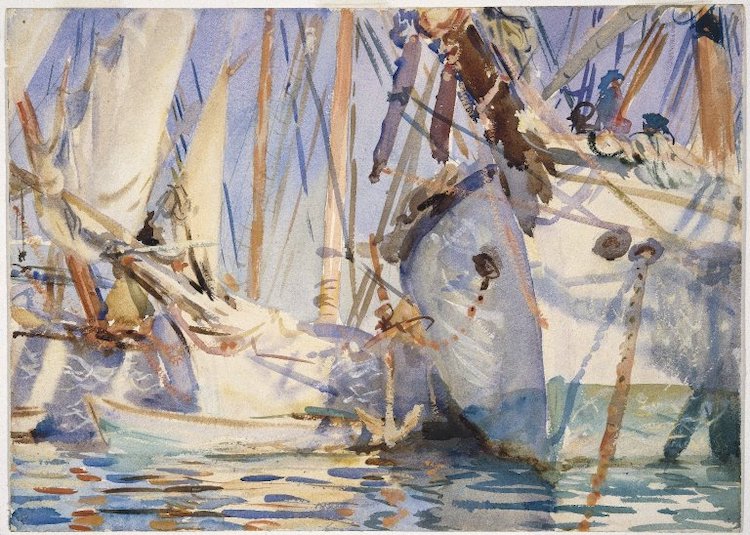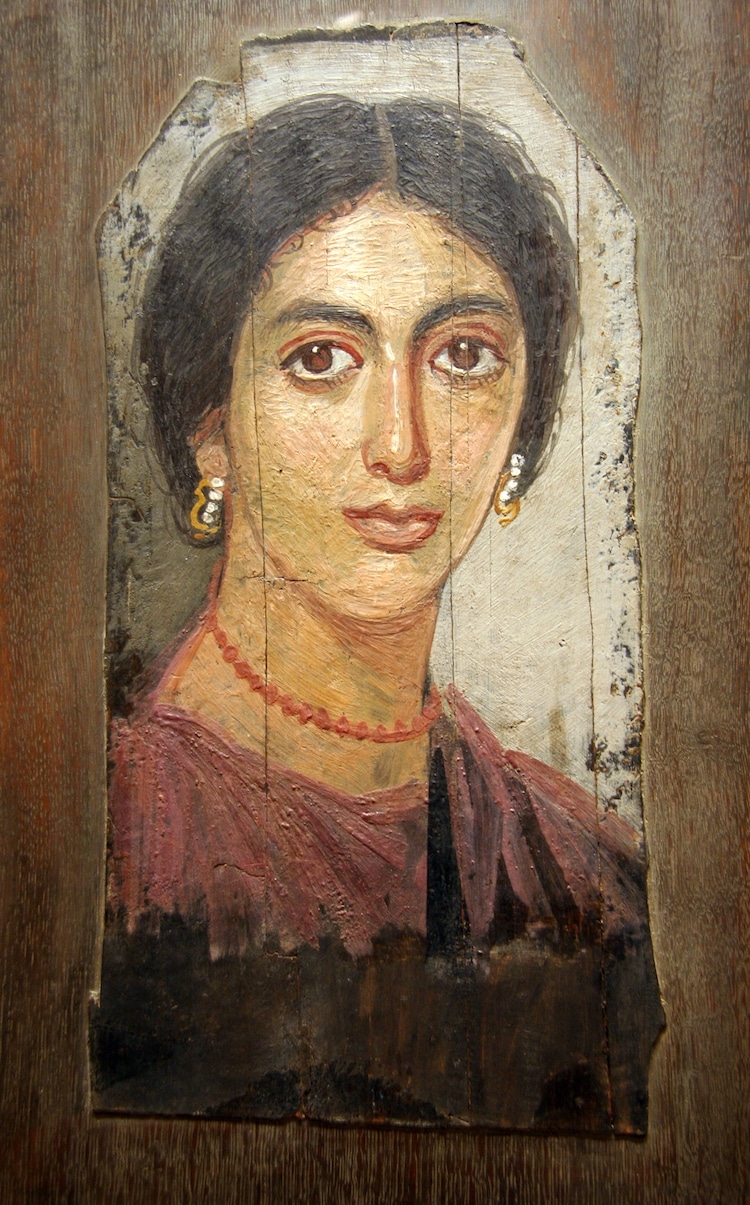
Stock Photos from PicMy/Shutterstock
This post may contain affiliate links. If you make a purchase, My Modern Met may earn an affiliate commission. Please read our disclosure for more info.
Over the course of history, the way artists have painted—and the mediums they use—has evolved. New technology and changing tastes mean that the paints used by artists have continued to diversify. But how do you know which is the right type of paint for you? Many of us are familiar with watercolor, oil, and acrylic paint, but there’s so much more out there for artists to explore.
While some types of painting, like fresco and tempera, aren’t practiced quite as frequently, others are seeing a resurgence. For instance, a renewed interest in hand lettering and sign painting has made enamel paint trendier than ever.
As an artist, how can you decide on the right type of paint for your artwork? Having a good grasp on the characteristics of each paint and the aesthetic they provide will help you narrow down your choices. Some painting techniques are easy for artists of all levels to pick up, while others may require more advanced technical skill.
Learn more about different kinds of paint to see what works best for you. Who knows? You just might be inspired to try a new type of painting.
Discover more about 11 types of painting that help artists express their creativity.
Oil

“Night in Venice” by Leonid Afremov. Oil on canvas. (Photo: Leonid Afremov)
For centuries, artists have been using oil paint to create their masterpieces. This slow drying medium is made from color pigments suspended in oil. Due to its long drying time, artists can take their time producing work. Oil paint is often used to create wonderful textured effects thanks to its thick consistency. Though it can be messy to work with and requires care when working with mediums that contain toxic elements, it’s still beloved by artists for the rich colors it produces. So, it should come as no surprise that it’s one of the most popular types of painting.
Learn how to pick the right type of oil paint in our handy guide.
Acrylic

“Diamela” by Alice Pasquini. 2018. Acrylic on canvas. (Photo: Alice Pasquini)
There are a wide array of acrylic paints in terms of texture and drying time. This water-soluble paint dries quickly, is non-toxic, and cost-effective, often making it a go-to choice for painters of all skill levels. Over time it holds up better than oil paint, as it’s not prone to cracking or yellowing. There are innumerable acrylic paint techniques and by combining the paint with different mediums, artists have flexibility in the final look. Though acrylic is water resistant when completely dry on the canvas, its water-soluble nature when damp makes for easy cleanup.
Learn more about the difference between acrylic paint and oil paint, as well as the best acrylic paint for artists of all levels.
Watercolor

“White Ships” by John Singer Sargent. Circa 1908. Watercolor. (Photo: Public domain via Wikicommons)
Typically painted on paper, watercolors are made from pigments suspended in a water-based solution. Known for the transparent layers they create, watercolor paint remains soluble even when dry. This means that artists can make some corrections even when the painting is dry, but this also means that finished work must be protected carefully. There are many watercolor techniques that artists use to create different styles of art, from realistic portraits to washed out landscapes. Although paper is the most common support, watercolors can also be used on surfaces like fabric, wood, leather, and vellum.
Looking for watercolors? Check our guide to the best watercolor sets.
Gouache

“Young Woman in a Rocking Chair, study for the painting ‘The Last Evening’ by Jacques Joseph Tissot. about 1873. Brush with gouache and watercolor, over graphite. (Photo: Getty Museum)
While gouache is similar to watercolor in that it can be re-wetted, this type of paint dries matte and is a heavier paint due to the chalk that’s incorporated into it. Gouache also has characteristics similar to acrylic in that it’s an opaque paint. It’s often used together with watercolor, and since it’s water soluble, it requires a varnish over the top to seal the finished painting. A newer variation is acrylic gouache, which uses an acrylic-based binder that allows the paint to become water resistant when dry.
Blick sells a wide variety of professional and student grade gouache.
Pastel

“Sleepy Baby” by Mary Cassatt. 1910. Pastel. (Photo: Public domain via Wikicommons)
Sometimes known as “dry painting,” the use of pastels has been popular since the 16th century. Their stick form and lack of drying time make them an easy and portable solution for artists. The most popular pastels—known as soft pastels—have chalk incorporated into them, but oil pastels with a waxy consistency are also available. Colors are typically blended straight onto the support and if you’re looking for a watercolor type effect, there are also water-soluble pastels. These paintings are fragile, as the pigment can lift from the surface, so should be framed under glass.
Learn more about how to paint with pastels.
Encaustic

Portrait of a woman from Al-Faiyum, Egypt. circa 100-150 C.E. Encaustic. (Photo: Public domain via WikiCommons)
This complex technique dates back to ancient Egypt and involves adding pigment to hot beeswax. The resulting paste is then typically applied to prepared wood, though canvas can also be used. Special tools are then used to shape and sculpt the liquid prior to cooling. Contemporary artists often use heat guns to extend the workability of the paint. Though encaustic—or hot wax painting—can be difficult to master, it is possible to create complex paintings full of dimension and color.
Find all the supplies you’ll need to get started with encaustic painting.
Next: Discover more painting techniques you may not be familiar with.
